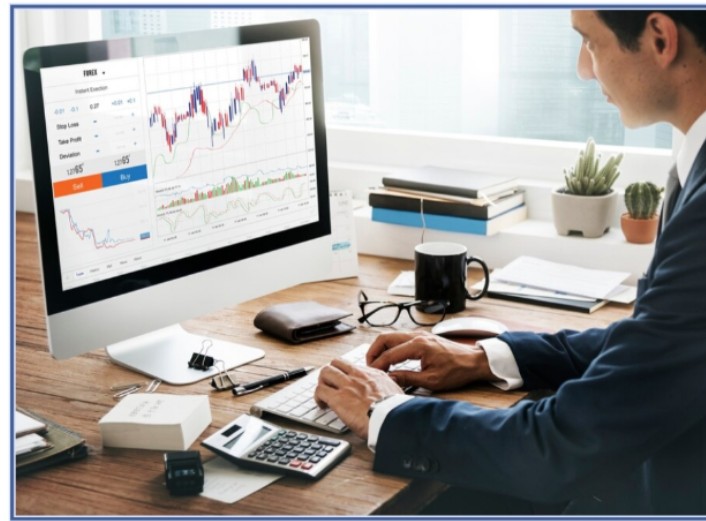How can you effectively leverage the popular EURUSD currency pair with a daily trading turnover of over $1 trillion?
Being the most actively traded pair in the forex market, EURUSD provides great opportunities and significant risk. The relatively recent market data shows that this volatile pair experiences daily fluctuation of more than 100 pips, making it important to fine-tune your trading strategies.
Effective strategy development can help you capitalize on these movements and mitigate potential losses. In this article, we will explore five essential methods to enhance your EURUSD trading strategy.
1. Utilize Technical Analysis
Technical analysis is common in forex trading due to the utilization of tools such as charts. For instance, in the case of the EURUSD analysis, one can determine key supports and resistances, patterns, and specific trade opportunities through technical analysis.
- Moving Averages: Some of the commonly used indicators on prices include Simple Moving Average and Exponential Moving Average. For example, a crossover between the 50-day EMA and the 200-day EMA is a signal of change in trends.
- Relative Strength Index (RSI): The RSI quantifies the rise and fall of stock price speed while giving out the ‘overbought’ or ‘oversold’ status. An RSI above 70 may be used to observe that the pair was overbought and a value below 30 — to define oversold conditions in the EURUSD pair.
- Fibonacci Retracement Levels: These levels can be used to search for possible supports and resistances that correlate with the Fibonacci sequence. For example, the 61.8% retracement level is another significant level that traders monitor for reversal signals.
2. Incorporate Fundamental Analysis

Fundamental analysis deals with the assessment of the economic factors and the events that may affect the EURUSD currency pair. Exchange rates highly depend on economic data releases, geo-political occurrences, and statements by central banks.
- Economic Indicators: Economic figures like GDP growth, unemployment, and inflation can help assess the state of the Eurozone and the US. For instance, good US jobs numbers may support the US dollar, while poor economic figures from the Eurozone may pull down the euro.
- Central Bank Policies: Fluctuations in the EURUSD can also be influenced by policies made by the European Central Bank (ECB) and Federal Reserve (Fed), including changes in interest rates and monetary policies. Follow any statements made by the two central banks regarding interest rates and economic forecasting.
- Geopolitical Events: There are some factors that may impact the EURUSD pair: political stability, trading negotiations, and so on. For instance, changes in personal relations between the USA and China can influence the EURUSD market.
3. Develop a Risk Management Plan
Risk management is one of the significant factors that determine the sustainability of trading in the long run. It entails putting in place some measures to protect your capital and minimize losses.
- Set Stop-Loss Orders: A stop-loss order ensures that a trader exits a position once the price reaches a specific point, thus reducing potential losses. For instance, placing a stop-loss order at 50 pips below the entry position assists in controlling risk.
- Define Take-Profit Targets: Setting take-profit levels helps you know when to pocket your gains when the market is trending as you want it to. For instance, if the take-profit level is set to 100 pips from when you entered the trade, the particular trade will end once this level is achieved.
- Use Proper Position Sizing: Choose the right trade size depending on your account balance and the risk level you are willing to take. For instance, traders can use the 1-2% rule when trading the overall capital to minimize overall risk and prevent their accounts from getting significantly harmed.
4. Implement a Trading Plan

To trade consistently and successfully, it is crucial to have a trading plan. A trading plan is a documented strategy, targets, and trade management signals regarding implementing an investment opportunity.
- Trading Goals: Establish specific and realistic trading objectives like target returns, risk tolerance, and time commitment. For instance, you may wish to target a 10 percent annual gain while having a maximum acceptable risk per trade of 2 percent.
- Entry and Exit Criteria: Set clear rules of when to enter and exit trades with the help of technical indicators, charting patterns, or fundamentals. For instance, you may enter a trade when the RSI exceeds 30 and exit when the price reaches a specific Fibonacci level.
5. Stay Informed and Adapt
The forex market is volatile and constantly changing. It is, thus, important that the investor keeps abreast of changes and is adaptable. Factors affecting the EURUSD pair include the market environment, economic factors, and geopolitical activities.
- Follow Market News: Ensure you keep up-to-date with the latest news and analysis regarding the EURUSD pair. Sources of financial information such as financial websites dealing in business and finance, economic calendars, and forums dealing with foreign exchange are helpful.
- Monitor Market Trends: Review charts and technical indicators to master present trends in the EURUSD pair and propensity for change. Revise the approach depending on the available knowledge and the changes in the environment.
Conclusion
Enhancing your trading strategy of EURUSD includes technical and fundamental analysis, risk management and assessment, proper trading strategy, and information updates. Applying these five methods to your trading plan and practice will help you improve your chances of trading successfully in the forex market. However, it should be noted that trading is a continuous process of learning, discipline, and flexibility.
Using these tools and strategies will make you more likely to experience steady performance and get the best out of your trading in the EURUSD market. Well, are you ready to put these ideas to use and enhance your trading experience?








